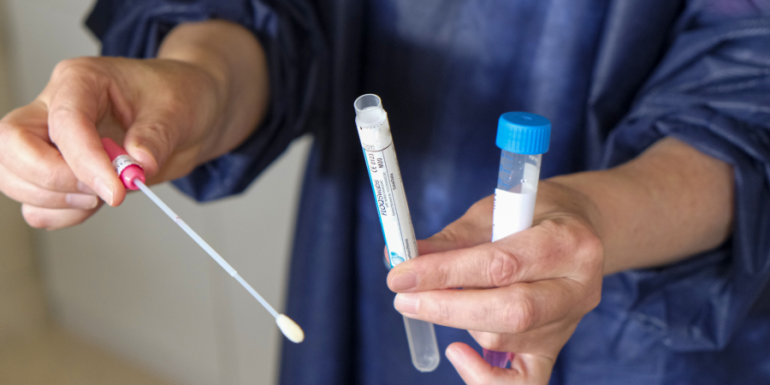Positive for many days even after the patient is released a PCR test may come out.
The assistant professor of Epidemiology in Greece, Gikas Majorkinis gave clarifications on the issue. Speaking to Capital.gr, he explained why the use of PCR should be done sparingly and at the same time referred to the critical day of quarantine, during which it is possible to make a super-transmission.
The professor explained that "molecular testing is a powerful tool used in specific cases.
In particular, he said, the use of the PCR test is intended for people with a negative diagnostic rapid but persistent severe symptoms ", to add" the pcr is very likely to remain positive after the 5th day regardless of symptoms. "PCR can be positive even 30 days after the initial infection."
A study from the University of Exeter showed that one in three people are still contagious after the fifth day. This means that on the fifth day many people will continue to transmit the coronavirus, which may result in a significant further spread of Covid-19.
I spare the use of PCR test
Professor of Epidemiology Gikas Majorkinis gives an example below to illustrate the case where we can have a positive PCR with persistent negative rapid tests and asymptomatic disease:
"I am quoting a fact that shows why PCR should be used sparingly and interpreted by qualified personnel in conjunction with the rapid antigen test.
A colleague asks my opinion about an incident where he has symptoms of respiratory and fever, while the rapid antigen test is negative for 2 days. Due to persistence of symptoms (day 3) a molecular SARS-CoV-2 test was requested which came out positive in high cycles (low load). On the 4th day the rapid antigen test is repeated which still comes out negative.
At that time, a syndromic panel was requested, which revealed the real culprit of the fever (parainfluenza virus). The (vaccinated) patient had passed SARS-CoV-2 asymptomatically within the last month and was infected with another virus with similar symptoms and was found to be positive for SARS-CoV-2 PCR.
Conclusions:
1) Positive PCR at low loads with negative antigen probably means old (> 10 days) undiagnosed SARS-CoV-2 infection
2) as the duration of positive PCR-negative antigen is much longer in the escape of the infection (average 17 days, it reaches up to 83 !!! days), the first thing to think about is old infection, despite the onset of infection
3) if the antigen is negative and the PCR is positive, always look at the load (PCR cycles), at low load ask for a repeat of the PCR or a repeat of the antigen after 1 day. If the antigen does not become positive in the next 1-2 days or the load remains low, we should consider alternative diagnoses.
4) I recommend the execution of the syndromic panel in severe cases with prolonged discrepancy between PCR and rapid SARS-CoV-2 antigen ".
